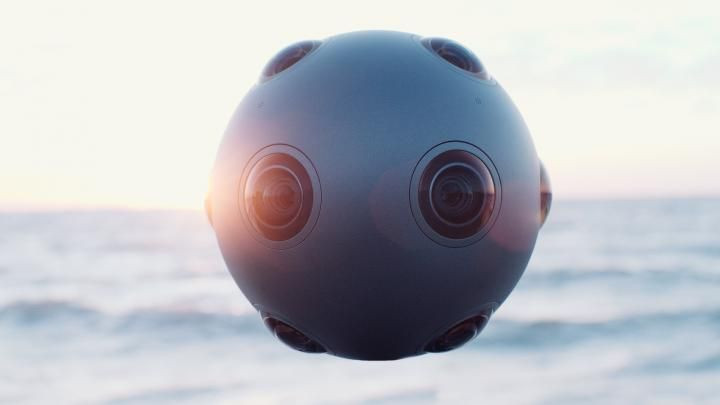OZO Camera Breaks New Ground In Virtual Reality For Post-Microsoft Nokia

Nokia is breaking new ground. Previously a global giant in mobile, it sold its smartphone manufacturing business to Microsoft in 2014 for $7.2 billion. Nokia won’t be able to sell new phones until late 2016 under the terms of the ill-fated buyout, but the Finnish company still has years of expertise making gadgets, and it’s using that in a new play for the virtual reality market.
The Nokia OZO VR camera, which will be released this fall, builds on the experience of developing cutting-edge cameraphones. The device records audio and 360-degree video, which can then be ported to any number of commercial VR systems. Nokia bills it as the world's first VR camera for content creators, and the video it produces will run on an Oculus Rift or any other upcoming headset. OZO is platform-agnostic: You don’t need a special Nokia headset for playback.
The “camera” looks more like a ball of cameras: it has eight synchronized global shutter sensors and eight integrated microphones that capture spatial audio. “We hear a majority of people referring to a cantaloupe for size comparison,” said Guido Voltolina, Nokia’s head of presence capture for OZO.
The company, in partnership with crowdsourcers at Tongal, is asking the public to propose a narrative in 500 characters that makes the most of the device’s storytelling capabilities. The two best concepts will receive $1,000, after which filmmakers will be invited to make a proposal for how they would bring the narrative to life in 120 seconds. The winning filmmakers will then be given $20,000 and an OZO camera to execute their idea. The filmmaker that produces the winning film gets to keep the camera.
Voltolina explains how the company experimented with different capture ideas in its internal testing. One video the team filmed was a band performing inside a location, with the camera positioned in the middle. Viewers could turn their head around to look at different performers, and -- thanks to the spatial-audio capture -- could hear music coming from players behind them.
“You can watch the show, but maybe you’re interested in what’s happening behind, and you turn around, and in the crowd there might be stars or important people,” Voltolina said. “The spectacle is not just the show but also what’s happening around you.”
News And Performances
Another scenario the team came up with was news reporting. Journalists can set up the camera at an event like a speech, and stand to the side and report on what’s taking place. Viewers are then free to choose whether to watch the event or listen to the reporter at the side.
With the Oculus Rift and Sony Project Morpheus scheduled for a 2016 release, Nokia seems to be embedding itself as a key player in the virtual reality space before these devices are unleashed to the world. After all, when they arrive, they’ll need content, and Nokia clearly has some big ideas for the sort of things that can be done with VR. “The virtual reality market is just at the beginning,” said Voltolina. “There is still so much to be discovered.”
Nokia could even end up working with Microsoft again. The software maker's HoloLens VR headset could hit the market as early as next year, though Microsoft has yet to confirm a release date.
© Copyright IBTimes 2024. All rights reserved.




















